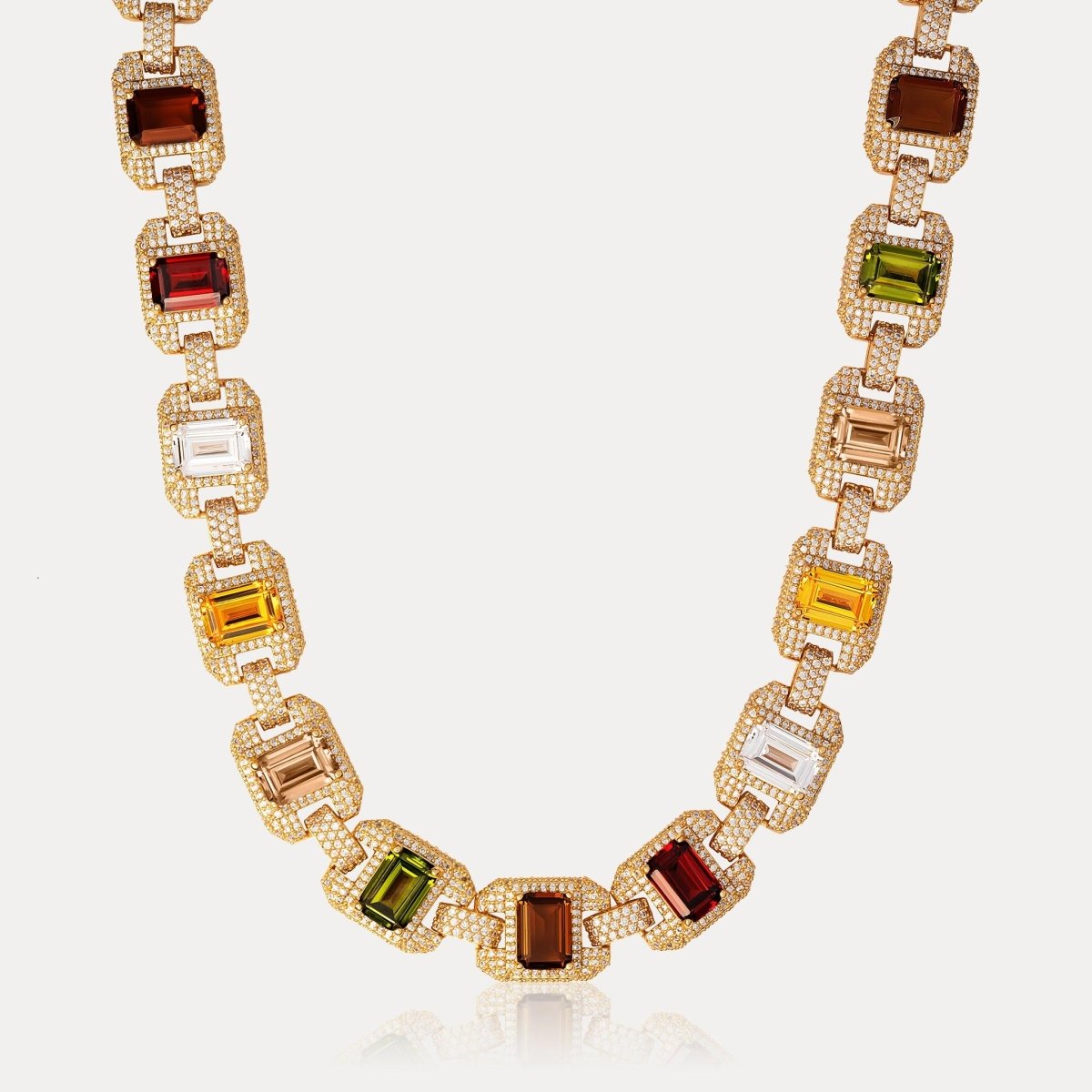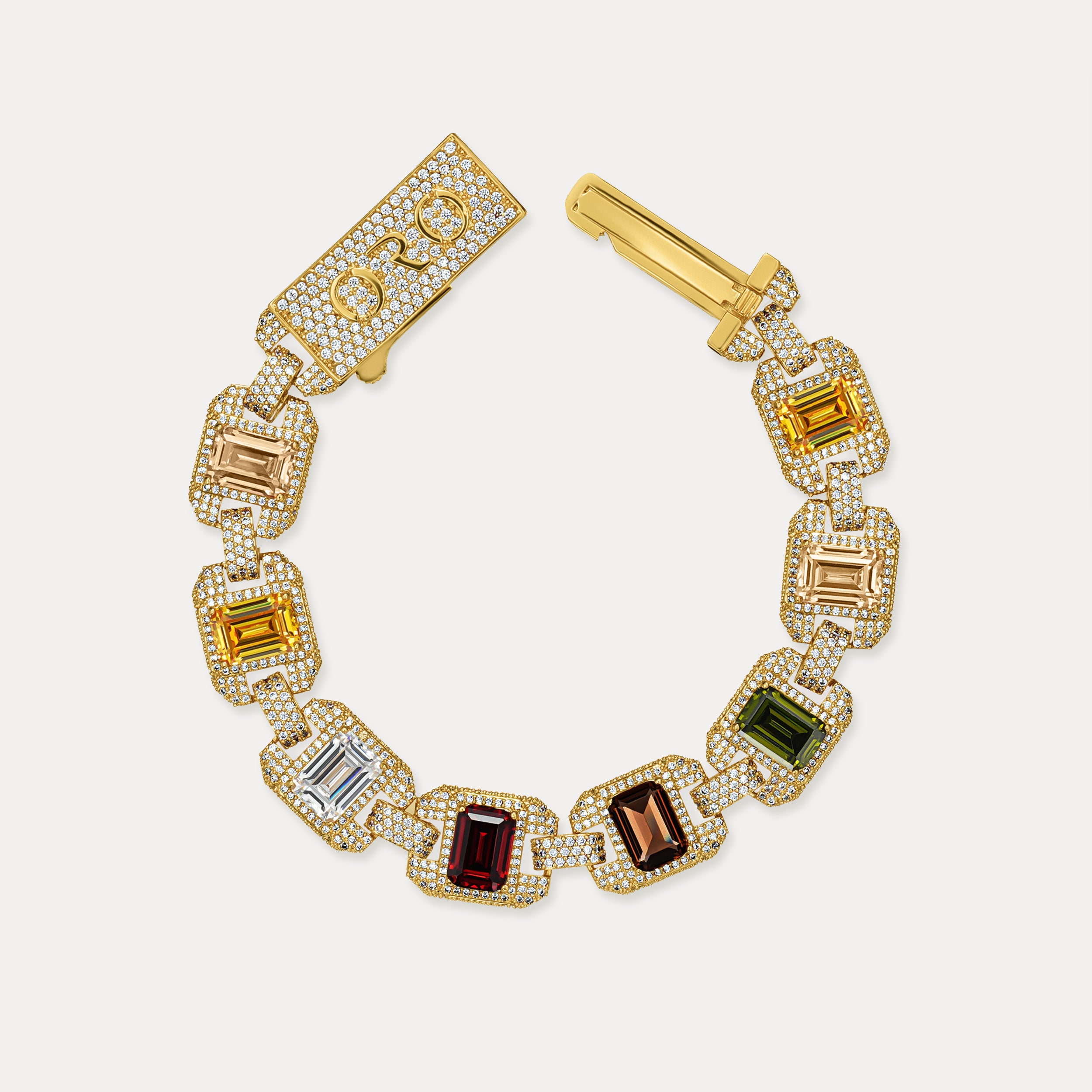Is Gold Plated Real Gold?
Gold plating is a popular technique used to give objects a luxurious and shiny appearance. It involves depositing a layer of gold onto the surface of an object through a process called electroplating. While gold plating can enhance the aesthetic value of an item, it is important to understand that gold plated items are not made entirely of gold. In this article, we will explore what gold plating is, the difference between gold plated and solid gold, and how to identify real gold plating.
Key Takeaways
- Gold plating involves depositing a layer of gold onto the surface of an object through electroplating.
- Gold plated items are not made entirely of gold and often have a base metal underneath.
- The thickness of the gold layer determines the durability and longevity of gold plated items.
- To identify real gold plating, look for markings such as 'GP' or 'GEP' on the item.
- Proper cleaning and maintenance are essential to preserve the appearance of gold plated items.
What is Gold Plating?
The Process of Gold Plating
Gold plating is a process where a thin layer of gold is applied to the surface of another metal. The metal object is first cleaned and prepared to ensure proper adhesion of the gold layer. Then, an electric current is used to deposit the gold onto the surface, creating a bond between the gold and the metal. This process is commonly used in jewelry making and for decorative purposes.
Gold plating can be done using different methods, such as electroplating or electroless plating. Each method has its advantages and disadvantages, but they all aim to achieve a durable and aesthetically pleasing gold layer on the metal object.
Benefits of Gold Plating
Gold plating offers several benefits that make it a popular choice for various applications:
-
Enhanced Appearance: Gold plating gives a luxurious and elegant look to the item, enhancing its visual appeal.
-
Durability: The gold plating process creates a protective layer that helps prevent corrosion and wear, increasing the durability of the item.
-
Versatility: Gold plating can be applied to a wide range of materials, including metals, plastics, and even fabrics, making it a versatile option for different industries.
-
Cost-Effective: Compared to solid gold, gold plating is a more affordable option while still providing the desired aesthetic.
-
Customization: Gold plating allows for customization by choosing the thickness and karat of the gold layer, providing flexibility in achieving the desired look.
Tip: To maintain the appearance of gold plated items, avoid exposing them to harsh chemicals or abrasive materials.
Common Applications of Gold Plating
Gold plating has a wide range of applications in various industries. Some common applications of gold plating include:
-
Electronics: Gold plating is commonly used in the electronics industry to improve conductivity and protect sensitive components from corrosion.
-
Jewelry: Gold plating is often used in the jewelry industry to create affordable pieces that have the appearance of solid gold.
-
Decorative Items: Gold plating is also used in the production of decorative items such as trophies, statues, and picture frames to add a luxurious and elegant touch.
-
Medical Devices: Gold plating is utilized in medical devices due to its biocompatibility and corrosion resistance properties.
Gold plating offers a cost-effective solution for achieving the desired aesthetic and functional properties in these applications.
Is Gold Plated Real Gold?
Understanding Gold Plating
Gold plating is a process where a thin layer of gold is applied to the surface of another metal. This layer of gold can vary in thickness, but it is generally quite thin, ranging from a few microns to a few millimeters. The purpose of gold plating is to give the appearance of real gold at a lower cost.
Gold plating is often used in the jewelry industry to create pieces that have the look of solid gold, but without the high price tag. It is also used in electronics, where it can provide a conductive surface and protect against corrosion.
When it comes to gold plated items, it's important to understand that the gold layer is not solid gold throughout. Instead, it is a thin layer of gold that is applied to the surface of another metal. This means that over time, the gold plating can wear off, revealing the metal underneath.
To identify real gold plating, you can look for certain hallmarks or markings on the item. These markings indicate that the item has been plated with real gold and not a cheaper alternative. It's also important to note that gold plating can vary in quality, with some items being more durable and long-lasting than others.
Difference Between Gold Plated and Solid Gold
Gold plated jewelry is made by coating a base metal with a thin layer of gold. This layer of gold is typically measured in microns, with a higher micron count indicating a thicker layer of gold. Solid gold, on the other hand, is made entirely of gold and does not contain any other metals.
One key difference between gold plated and solid gold is the durability. While solid gold is highly resistant to tarnish and corrosion, gold plated jewelry may wear off over time, revealing the base metal underneath.
Another difference is the value. Solid gold jewelry is more valuable than gold plated jewelry because it contains a higher percentage of gold. Gold plated jewelry, although it has a layer of gold, is still primarily made of a base metal.
It's important to note that gold plating can vary in quality. Higher quality gold plating, such as gold vermeil, can be more durable and have a thicker layer of gold compared to lower quality gold plating.
In summary, gold plated jewelry is a more affordable option compared to solid gold, but it may not have the same durability or value.
Pros and Cons of Gold Plating
Advantages of Gold Plating
Gold plating offers several advantages that make it a popular choice for various applications:
-
Enhanced Appearance: Gold plating adds a luxurious and elegant look to items, making them visually appealing.
-
Durability: The gold plating process creates a protective layer that enhances the durability of the item, making it resistant to tarnish, corrosion, and wear.
-
Cost-Effective: Gold plating provides a cost-effective alternative to solid gold, allowing individuals to enjoy the aesthetic benefits of gold without the high price tag.
-
Versatility: Gold plating can be applied to a wide range of materials, including jewelry, electronics, and decorative items, offering versatility in design and application.
-
Hypoallergenic: Gold plating can be a suitable option for individuals with metal allergies, as the gold layer acts as a barrier between the skin and the base metal.
Tip: To maintain the appearance and longevity of gold plated items, it is important to handle them with care and avoid exposing them to harsh chemicals or abrasive materials.
Disadvantages of Gold Plating
Gold plating, while offering many benefits, also has its drawbacks. One major disadvantage is that the gold plating can wear off over time, especially with frequent use. This can result in the underlying base metal being exposed, which can affect the appearance and durability of the item.
Another disadvantage of gold plating is that it can cause allergic reactions in some individuals. This is because gold plating often contains other metals, such as nickel, which can cause skin irritation and allergic dermatitis.
Additionally, gold plating is not as durable as solid gold. It is more prone to scratches, tarnishing, and fading. Therefore, it requires regular maintenance and care to preserve its appearance.
To avoid these disadvantages, it is important to choose high-quality gold plating and handle the plated items with care. Regular cleaning and maintenance can help prolong the lifespan of gold plated items and prevent them from losing their luster.
Caring for Gold Plated Items
Cleaning and Maintenance Tips
When it comes to cleaning and maintaining gold plated items, it's important to follow the proper steps to ensure their longevity and shine. Here are some tips to keep in mind:
-
Use a soft cloth or brush: When cleaning gold plated items, avoid using abrasive materials that can scratch or damage the surface. Instead, use a soft cloth or brush to gently remove any dirt or debris.
-
Avoid harsh chemicals: Harsh chemicals, such as bleach or ammonia, can tarnish or strip away the gold plating. It's best to avoid using these substances when cleaning gold plated items.
-
Store properly: When not in use, store gold plated items in a clean, dry place to prevent tarnishing. Avoid storing them in humid areas or with other jewelry pieces that can cause scratching.
-
Avoid contact with water: Water can cause the gold plating to fade or wear off over time. It's important to remove gold plated items before swimming, showering, or engaging in any water-related activities.
Remember, proper care and maintenance can help extend the lifespan of your gold plated items and keep them looking their best.
Avoiding Damage to Gold Plating
To ensure the longevity of your gold plated items, it is important to take proper care and avoid actions that could damage the plating. Here are some tips to help you protect your gold plated items:
-
Avoid exposing the items to harsh chemicals such as bleach, ammonia, or cleaning solutions that contain abrasive substances. These can cause the gold plating to wear off or become discolored.
-
Remove your gold plated items before engaging in activities that may cause friction or abrasion, such as exercising, gardening, or cleaning. This will help prevent scratches and wear on the plating.
-
Store your gold plated items separately from other jewelry to prevent them from rubbing against each other and causing damage.
-
When cleaning your gold plated items, use a soft cloth or a non-abrasive jewelry cleaning solution. Gently wipe the surface to remove any dirt or oils.
Remember, proper care and maintenance will help preserve the beauty and shine of your gold plated items for a long time.
Conclusion
In conclusion, while gold plated items may contain a thin layer of real gold, they are not considered to be made entirely of gold. The plating process involves depositing a layer of gold onto a base metal, which means that the majority of the item is composed of a different material. It is important to understand the difference between gold plated and solid gold items, as this can affect their value and durability. Gold plated items can still provide a luxurious appearance at a more affordable price, but they may require more care and maintenance to preserve their gold-like shine.
Frequently Asked Questions
Is gold plated real gold?
Gold plated items have a thin layer of real gold on the surface, but the core material is usually a different metal.
How long does gold plating last?
The durability of gold plating depends on factors such as the thickness of the gold layer, the quality of the plating process, and how the item is used and cared for. With proper maintenance, gold plating can last for several years.
Can gold plating wear off?
Yes, gold plating can wear off over time, especially with frequent use or exposure to harsh chemicals. However, proper care and maintenance can help prolong the lifespan of gold plating.
Can gold plated jewelry be repaired?
In most cases, gold plated jewelry cannot be repaired once the gold layer wears off. However, some jewelers may offer re-plating services to restore the item's appearance.
Is gold plating hypoallergenic?
Gold plating itself does not guarantee hypoallergenic properties. Some individuals may still experience allergic reactions to the base metal underneath the gold layer. It is important to consider the base metal when assessing the hypoallergenic nature of a gold plated item.
Can gold plating tarnish?
While gold itself does not tarnish, the base metal underneath the gold layer in gold plated items can tarnish over time. This can affect the appearance of the item and may require cleaning or re-plating to restore its shine.
Best Sellers



















































Leave a comment
This site is protected by hCaptcha and the hCaptcha Privacy Policy and Terms of Service apply.